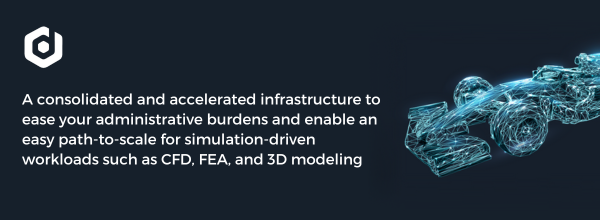As engineering companies strive to achieve more with less, they must find new ways to leverage technology to optimize their operations. One such technology is virtualization. By pooling computing resources and allocating them to specific tasks, virtualization has enabled enterprises to optimize their server utilization, streamline their IT operations, and reduce costs.
Enhanced Technical Capabilities
GPU virtualization allows engineering firms to provide their designers and engineers with access to a pool of shared graphics processing units (GPUs). These powerful graphics processors deliver advanced rendering and visualization capabilities, which are essential for engineers working with computationally intensive applications such as CAD, CAM, and CAE. By leveraging virtualized GPUs, engineering firms can increase the performance of their design and simulation applications, create high-resolution graphics, and boost productivity.
Streamlined Hardware Management
Managing an in-house GPU infrastructure at an engineering firm can be a challenge. The cost of GPUs, as well as the complexity of the IT infrastructure, can limit adoption. However, GPU virtualization allows for the consolidation of GPU resources, thereby enabling IT teams to manage the hardware in a more centralized manner. IT administrators can allocate virtual GPUs to specific users or VMs, and they can scale up or down the resources based on the actual workload requirements. This flexibility allows engineering firms to optimize their hardware investment while simplifying the management process.
More Efficient Workflows
By virtualizing GPUs, engineering firms can create virtual desktops that are optimized for the specific needs of their users. For example, engineers that work on a specific project can be provided with a virtual desktop that has the necessary software, processing power, and graphics capabilities to complete their tasks. This set up eliminates the need for engineers to purchase or install specialized hardware. Furthermore, it ensures that the entire enterprise is using the same hardware and software versions, which helps to standardize workflows and avoid compatibility issues.
Increased Security and Compliance
An enterprise that houses sensitive data such as engineering designs and product specifications must ensure that it adheres to regulatory standards for data access and security. By leveraging virtualization, engineering firms can isolate user data, applications, and hardware in secure virtual environments. These virtual desktops are managed by IT teams, and access is granted on a need-to-know basis only. As such, virtualization offers engineering firms a greater level of control over their data, while also providing better compliance with internal and external regulatory requirements.
Faster Time to Market
Engineering firms must operate with speed and agility to remain competitive in an ever-changing market. GPU virtualization can help to achieve this objective by providing engineers and designers with the tools they need to complete their projects more quickly and efficiently. By using advanced graphics, engineers can create more accurate and precise designs, which will shorten the product development lifecycle. In addition, virtualization enables engineers to collaborate in real-time, often across geographical regions, to accelerate decision making.
By providing access to powerful graphics processors, streamlining hardware management, optimizing workflows, improving security, and reducing the time to market, virtualization has become a critical component of every successful engineering firm’s IT strategy. Talk to us today about your GPU requirements.

